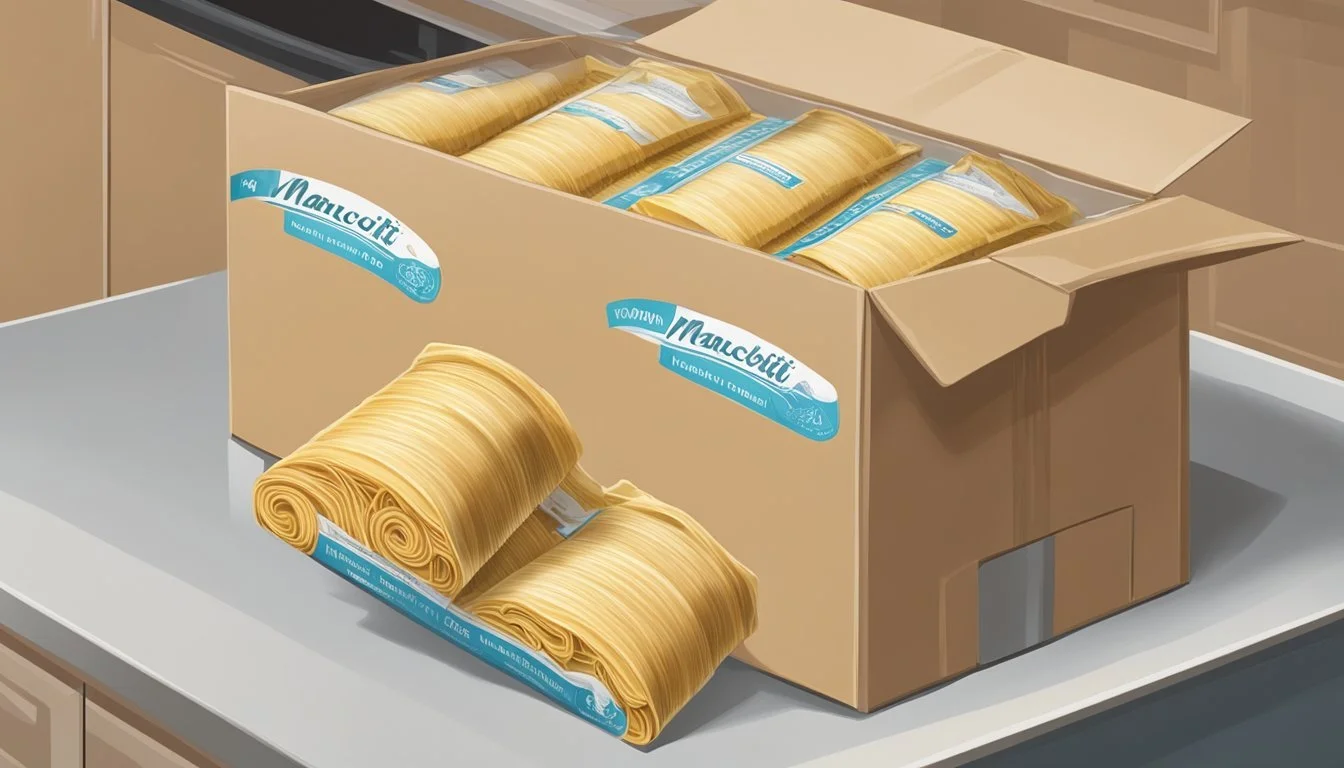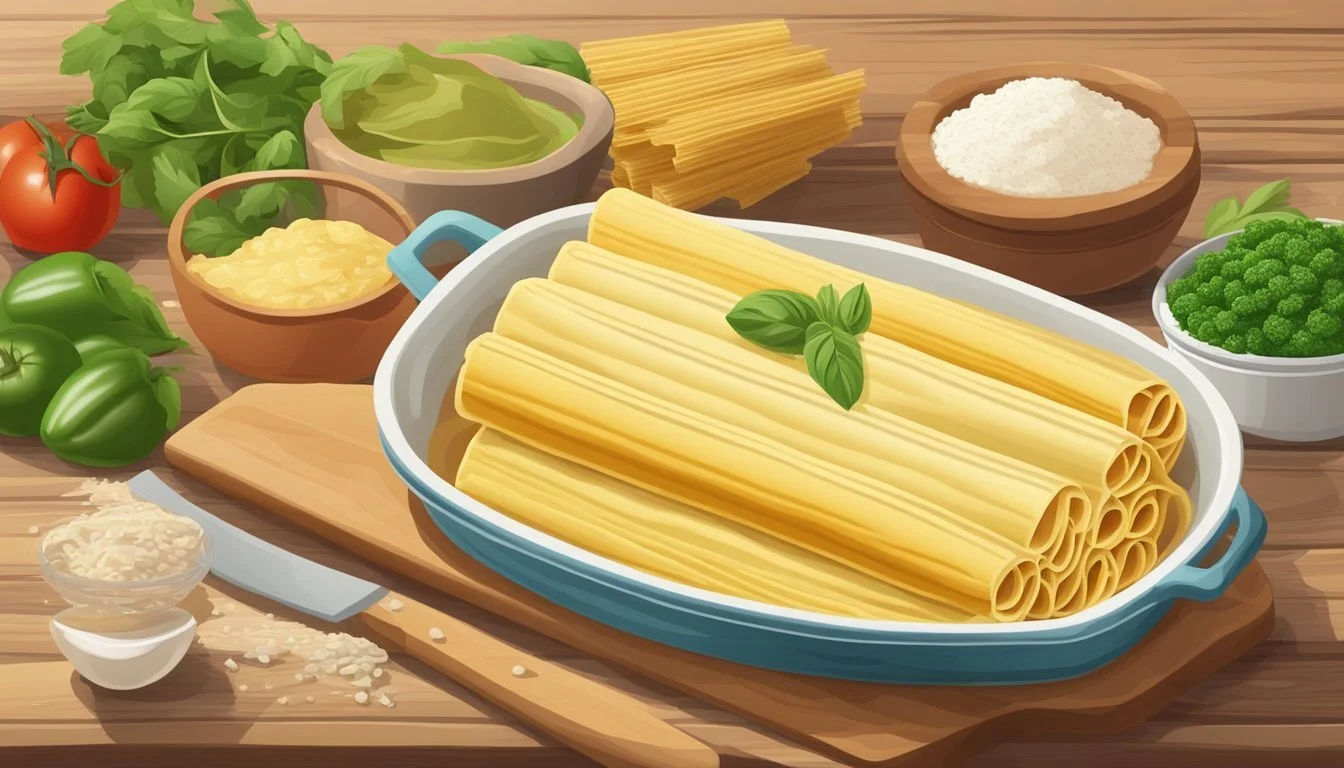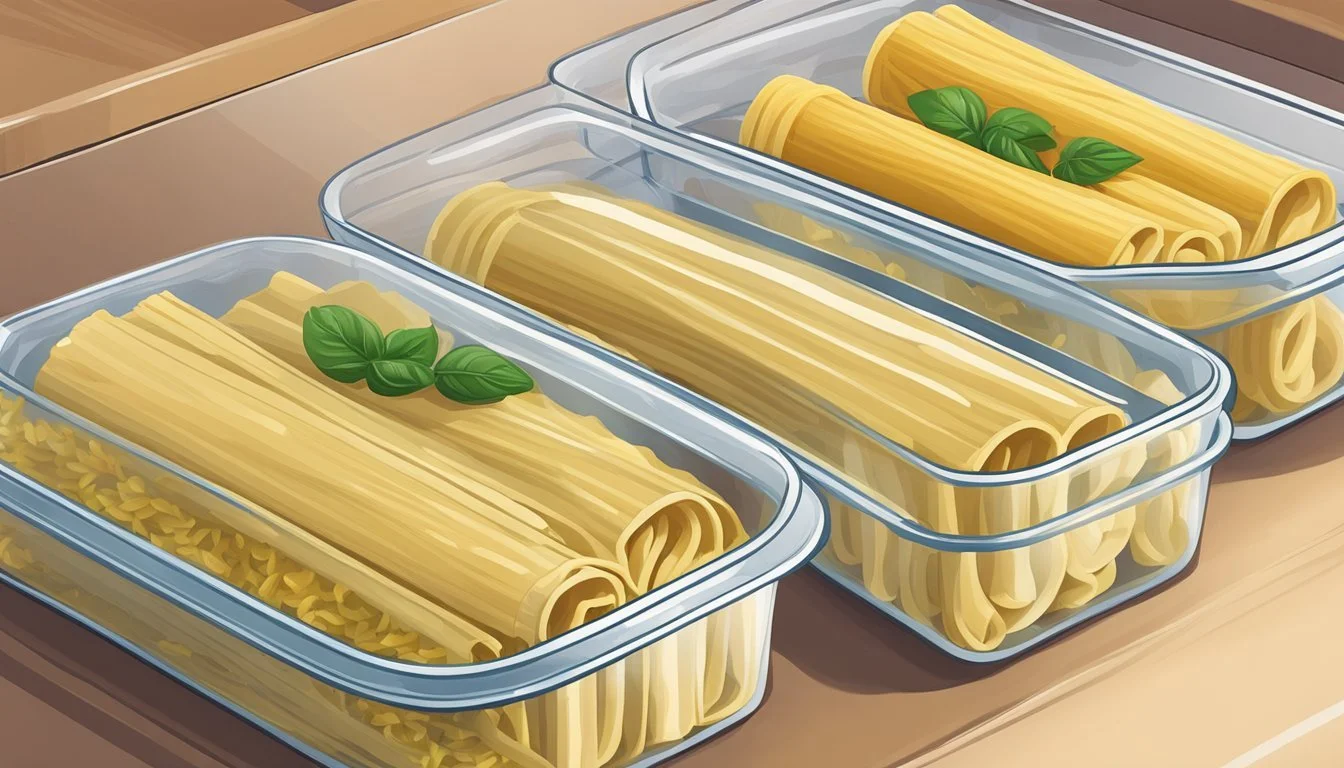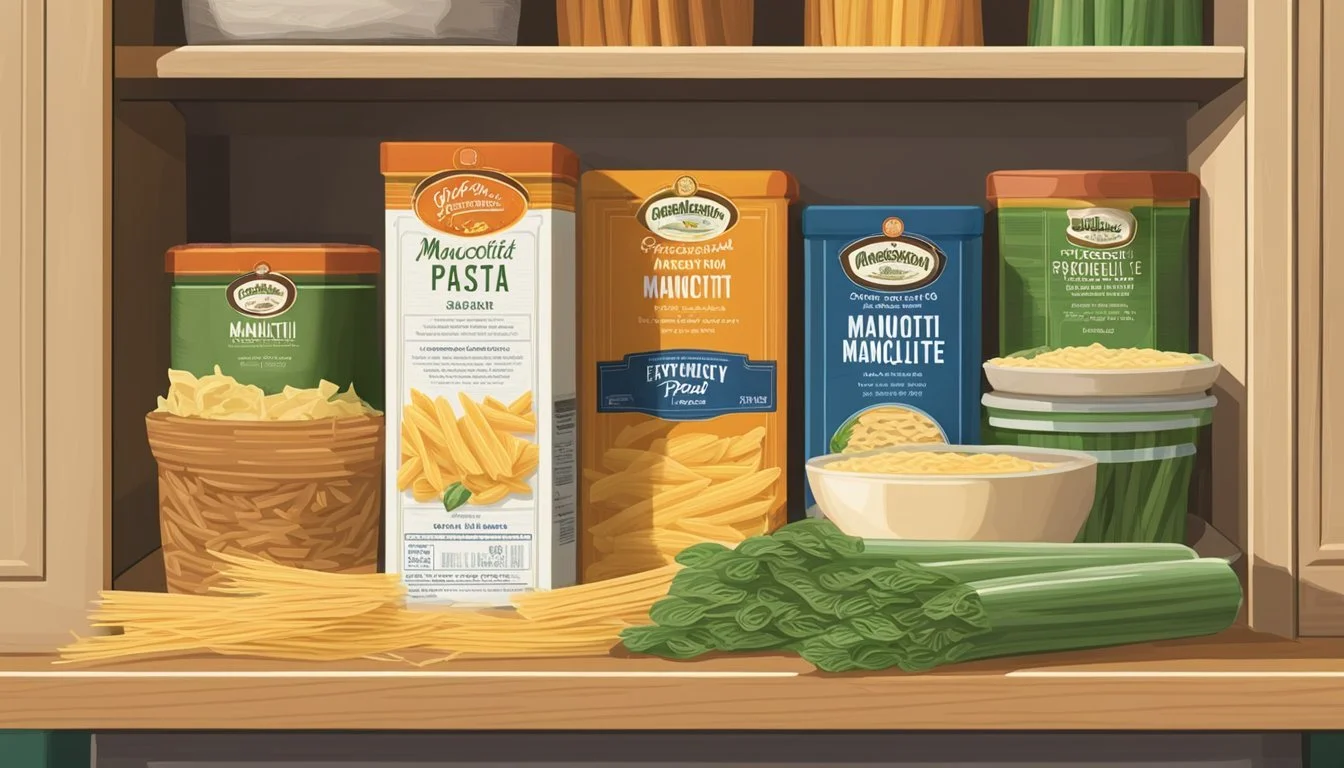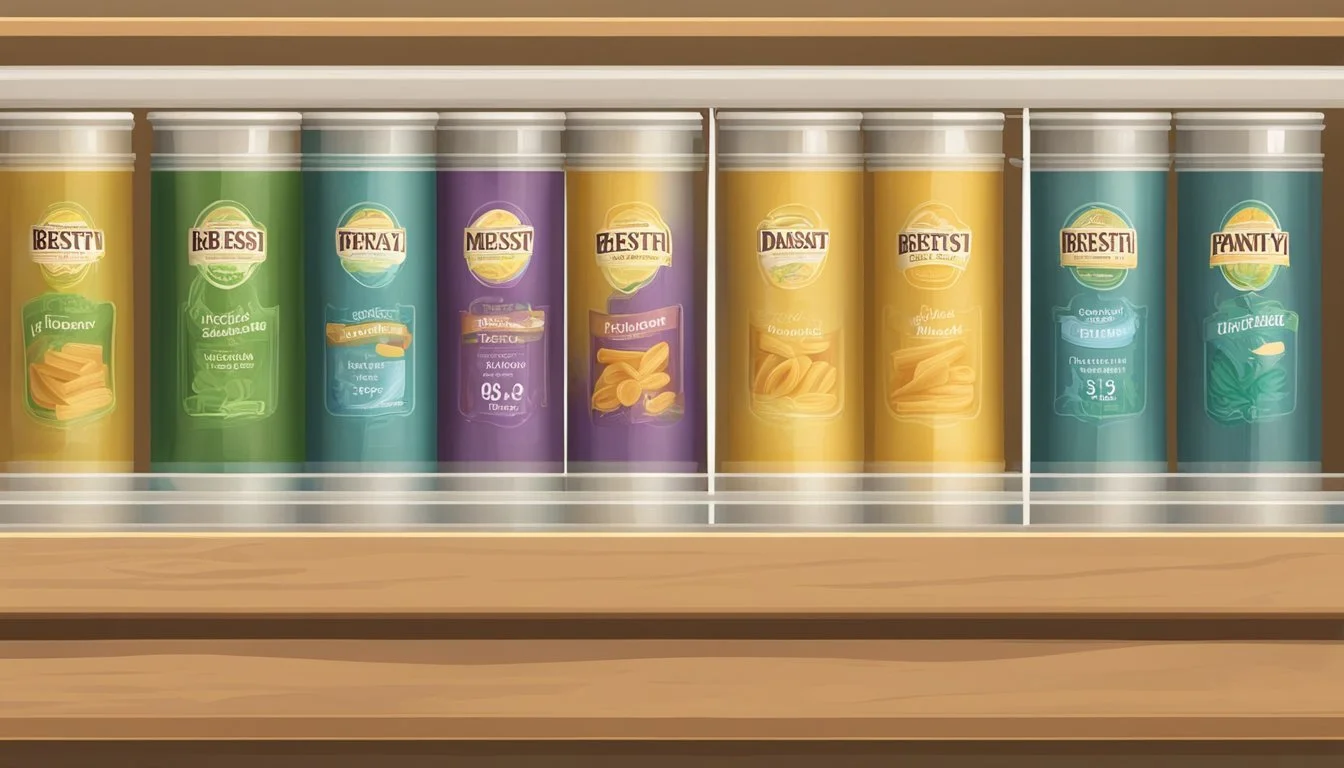How Long Does Manicotti Pasta Last?
Shelf Life and Storage Tips
Manicotti pasta is a popular Italian dish known for its large, tube-shaped noodles that are typically stuffed with cheese, meat, or vegetables and baked to perfection. Fresh manicotti has a more limited shelf life compared to its dried counterpart. An unopened package of fresh manicotti can generally be stored in the refrigerator for up to two weeks, with the expiration date on the packaging being the key indicator of its longevity. It's essential to adhere to any storage directions provided by the manufacturer to maintain the quality and safety of the pasta (What wine goes well with pasta?).
The longevity of pasta also varies depending on whether the manicotti is fresh or dried. Fresh manicotti, once opened, should ideally be consumed within four days if kept refrigerated, while any cooked leftovers are best eaten within two days. As for dried pasta, it has a significantly longer shelf life due to low moisture content, making it less prone to spoilage. Although dried pasta can technically last indefinitely, its quality is best when used within one to two years.
To extend the usability of fresh manicotti beyond the typical refrigerator shelf life, freezing is an option. Properly stored, frozen manicotti can last for several months, ensuring that the pasta retains its flavor and texture when used at a later date. When cooking manicotti, it's suggested to follow specific cooking times to ensure the pasta retains the perfect texture, especially if it will undergo further cooking, such as baking in an oven.
Types of Manicotti Pasta
Manicotti pasta is commonly encountered in two forms: fresh and dried. Each has distinct characteristics and shelf lives.
Fresh Manicotti
Fresh manicotti is often found in the refrigerated section of a grocery store. This type of pasta is made with ingredients such as eggs, ricotta, and spinach and is meant to be consumed relatively quickly. It maintains a moist texture and has a shelf life of up to two weeks when unopened and refrigerated. Once the package is opened, it should be used within 4 days.
Dried Manicotti
Dried manicotti, on the other hand, is typically available in the pasta aisle and has a much longer shelf life due to the lack of moisture. This pasta variant does not contain perishable ingredients like eggs or cheese and can be stored in a dry environment for extended periods. Dried manicotti is versatile and can be filled with a variety of cheeses, including ricotta, before cooking.
Storing Manicotti Pasta
The shelf life of manicotti pasta greatly depends on the storage method. Proper storage is essential to maintain its taste and avoid spoilage.
Refrigerator Storage
Fresh, uncooked manicotti should be kept in the refrigerator where it can last up to two weeks. It's important to store it in its original packaging until it's ready to be used. Once opened, or if cooked, leftover manicotti should be placed in an airtight container and consumed within 4 days. Make sure the refrigerator is set to a temperature of 40°F or lower to prevent bacterial growth.
Pantry Storage
Dry manicotti pasta must be stored in a pantry at room temperature, away from heat, light, and moisture. It's best kept in an airtight container to protect it from insects and to maintain its quality. Under these conditions, dry pasta can typically last for several years.
Freezer Storage
To extend the shelf life of cooked manicotti, freezing is an effective option. Once the manicotti has cooled, wrap it with plastic wrap and place it in a freezer-safe container. It can be stored in the freezer for 1-2 months. To use, thaw it in the refrigerator before reheating. For optimal quality, make sure to remove as much air as possible before sealing the container and placing it in the freezer.
Shelf Life of Manicotti Pasta
The longevity of manicotti pasta varies by type—fresh, dried, or cooked. Each has a specific shelf life influenced by storage conditions and whether the package is opened or unopened.
Fresh Manicotti Shelf Life
An unopened package of fresh manicotti typically lasts for up to two weeks in the fridge, provided it's stored correctly and kept at a consistent, cold temperature. Consumers should always check the expiration date and adhere to any storage guidelines provided. Once opened and exposed to air, fresh manicotti should be consumed within 4 days to ensure quality and safety.
Dried Manicotti Shelf Life
Dried manicotti, still within its package, has a considerably longer shelf life due to the lack of moisture that can lead to spoilage. It can last for 1-2 years beyond the "best by" date when stored in a cool, dry place, such as a pantry. After the package is opened, dried manicotti should be kept in a well-sealed container to maintain freshness for as long as possible.
Cooked Manicotti Shelf Life
Once manicotti is cooked, it should be eaten within 5 days when stored in the fridge. Factors affecting its shelf life include how quickly it was refrigerated after cooking, the ingredients used in the filling, and how well it's covered or sealed. To prevent bacterial growth, cooked manicotti should not be left at room temperature for more than 2 hours.
Determining Pasta Quality
When assessing the quality of manicotti pasta, one should pay attention to visual and textural signs of deterioration, as these can greatly affect the flavor and overall edibility of the pasta.
Signs of Deterioration
Manicotti pasta, like other fresh pasta varieties, may show certain signs indicating it is no longer suitable for consumption. Observing the pasta's appearance is crucial. Fresh pasta (how long does fresh pasta last?) should have a consistent color. If one notices discoloration or mold, it is a clear indication that the pasta has deteriorated and should not be consumed. Moreover, fresh pasta that has become slimy to the touch is a sign of spoilage. In these cases, the pasta has likely been exposed to moisture or bacterial growth.
Discoloration: Change in color, often signaling spoilage.
Mold: Visible spots or fuzzy growths; never consume moldy pasta.
Slimy Texture: Indicates bacterial growth; pasta should not feel slippery when fresh.
Impact on Taste and Texture
The flavor and texture of manicotti pasta are prime indicators of its quality. Fresh manicotti should taste clean, with no sour or off-putting odors, and the texture should be soft but not mushy. When pasta deteriorates, it often becomes excessively soft or hard and may develop an unpleasant taste. These changes suggest that the pasta has either absorbed too much moisture, dried out, or that bacterial growth has compromised its quality.
Flavor: Off flavors or sour smell indicate spoilage.
Texture: Pasta that is too soft or hard shows it's past its prime.
By closely examining these characteristics, one can confidently determine the quality of manicotti pasta and ensure that it is safe and pleasurable to eat.
Safety Considerations
When handling manicotti pasta, safety is paramount to prevent foodborne illnesses and the risks that come with consuming spoiled food. Ensuring manicotti pasta's longevity is about adhering to storage guidelines and recognizing spoilage signs.
Foodborne Illness Prevention
To prevent the onset of foodborne illnesses, the individual must store manicotti at safe temperatures immediately after purchase or cooking.
Refrigeration: Uncooked manicotti should be kept in the refrigerator and consumed within 4 days, while cooked manicotti's optimal quality is maintained up to 1 to 2 months when frozen.
Temperature: Store manicotti at a constant temperature of 40°F or below in the fridge, and 0°F or below if it's frozen.
Freshly cooked manicotti can become a breeding ground for bacteria if left at room temperature for over 2 hours. Therefore, it's critical to refrigerate promptly.
Risks of Spoiled Pasta
Consuming manicotti that has gone bad can lead to food poisoning. Here are the signs one should look for to assess if pasta is safe to eat or should be discarded:
Smell: A sour or musty odor is a clear indication that manicotti has spoiled.
Visuals: Any form of discoloration or mold growth on the pasta means it is not safe for consumption.
Texture: If the pasta feels slimy or sticky to the touch, it's time to throw it away.
The occurrence of any of these signs suggests that the manicotti has become compromised and should not be consumed, as it poses a health risk.
Preparation and Cooking
Preparing and cooking manicotti correctly is crucial for both taste and texture. The pasta should be al dente before proceeding with the recipe, and reheating methods should preserve its integrity.
Cooking Fresh and Dried Manicotti
Fresh Manicotti: If one opts for fresh manicotti pasta, it is important to recognize that the cooking time will be significantly less than that of dried pasta. Generally, fresh manicotti should be cooked in boiling water for 2-4 minutes until it barely starts to soften.
Dried Manicotti: On the other hand, when using dried manicotti pasta, it is recommended to partially cook the shells so they retain some firmness before being filled. One should boil them for 5 minutes, then rinse under cold water to stop the cooking process. This ensures they don’t become too soft after being filled and baked.
Following these guidelines, the pasta can then be filled with the desired ingredients. The filled manicotti is typically baked in an oven for additional time, during which the pasta will continue to cook.
Reheating Cooked Manicotti
When reheating manicotti, the goal is to warm the dish thoroughly without drying it out or overcooking the pasta. Manicotti can retain its best texture and flavor when reheated in the oven. Covering the dish with foil can prevent it from drying out. Reheat at a moderate temperature, around 350°F (175°C), for about 15-20 minutes.
To reheat in a microwave, it's best to do so on medium power and in short intervals, checking frequently. This method can cause the pasta to become soft if overheated, so attention is key.
Following these procedures ensures that manicotti pasta is cooked to the right consistency, loaded with flavors, and warmed up perfectly for serving.
Recipe Ideas
When exploring manicotti recipes, one can opt for the traditional approach focusing on cheese and marinara sauce or experiment with various fillings, incorporating meats and a mix of herbs for creative twists.
Traditional Italian Manicotti
Traditional Italian Manicotti is a celebration of simplicity and rich flavors. At the core of the dish is ricotta cheese, which provides a creamy and slightly sweet filling. The manicotti are large pasta tubes, generously filled with a mixture of ricotta, grated cheese such as Parmesan or Pecorino Romano, and often a combination of mozzarella for extra ooze. Marinara sauce, made from tomatoes, garlic, and basil, is ladled over the stuffed pasta before baking. This classic comfort food can be garnished with additional herbs like parsley to enhance its flavor profile.
Creative Manicotti Variations
Diverse and imaginative variations of manicotti allow the cook to infuse personal flair into the dish. By incorporating meats such as ground beef, shredded chicken, or crumbled Italian sausage, manicotti transforms into a hearty meal. Swapping marinara for a creamy Alfredo or pesto sauce (how long does pesto sauce last?) can also introduce a new dimension to the flavor. Creative fillings may include a mixture of cheeses like ricotta, sharp cheddar, or smoked gouda, and are often seasoned with a custom blend of spices and fresh herbs to elevate the taste beyond the traditional cheese manicotti.
Understanding Pasta Labels
When purchasing pasta such as manicotti, the packaging label provides essential information regarding its shelf life and proper storage. Consumers should pay close attention to these details to ensure they are using the product at its best quality and to avoid any potential food safety issues.
Expiration Dates and Manufacturer Guidelines
Expiration Dates: Packages of manicotti will have an expiration date or a "best by" date printed on the label. This date is the manufacturer's estimate of how long the pasta will remain at peak quality. For fresh manicotti, this date typically suggests consumption within two weeks if kept refrigerated and unopened.
Manufacturer Guidelines: The label often includes storage instructions that are paramount for maintaining freshness after opening. For example, fresh manicotti should be consumed within 4 days of opening if stored in the refrigerator, while the freezer can extend its quality for 1 to 2 months. Buyers are advised to always:
Store manicotti as per the temperature instructed on the label.
Consume refrigerated, opened packs of manicotti within the specified timeframe.
Observe any changes in texture or smell as indicators of possible spoilage beyond the label's advice.
Additional Storage Tips
Proper storage of manicotti is essential to maintain its quality and maximize shelf life. The following subsections provide specific guidance on the ideal containers to use for storage and methods to prolong the shelf life of manicotti.
Ideal Containers for Storage
For storing manicotti, one should always use airtight containers to keep out moisture and other contaminants. Plastic bags can serve as an alternative, but must be sealed properly and free of excess air. Containers should also be shallow to allow for quicker cooling, which reduces the risk of bacterial growth.
Maximizing Shelf Life
The shelf life of manicotti can be extended by ensuring it is coated with a thin layer of olive oil, which helps prevent the pasta from drying out. If manicotti contains perishable ingredients like herbs or romano cheese, they should be refrigerated promptly. The quality of these ingredients directly affects the overall shelf life. Storing cooked manicotti in the fridge should be done at temperatures between 35-40°F under ideal storage conditions to maintain freshness for up to five days.

